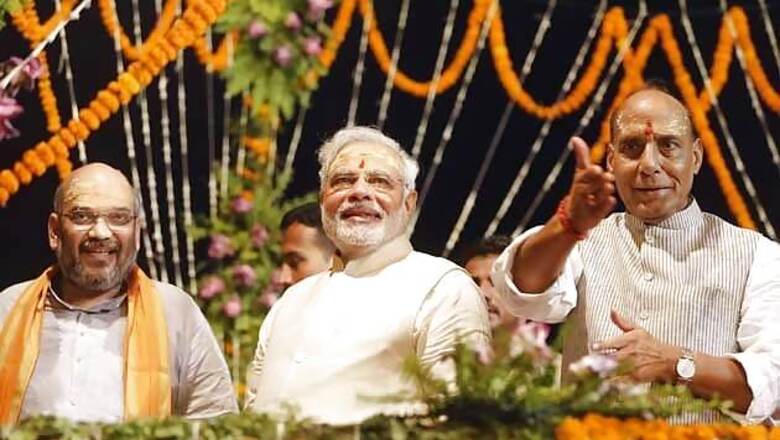
views
In the 16th Lok Sabha the Bharatiya Janata Party and its allies enjoy a brute majority of 335 in the 543-member House. With the opposition completely decimated and the Congress reduced to his lowest-ever tally of 44, the Narendra Modi-led government is unlikely to face any difficulty in pushing through legislations and its agenda.
But the worry for the BJP is in the Rajya Sabha where it is well short of the half-way mark of 123 MPs and will need the help of regional parties with which it fought a tough electoral battle just a few days ago. The Congress is still the largest party in the 245-member Rajya Sabha with 68 MPs while the BJP has just 46.
Even with its allies, the BJP reaches just 65 and will need the help of others to push through its legislations. So the party needs to humour parties like the AIADMK, Trinamool Congress and others as it is way behind the simple majority mark.
One third of Rajya Sabha members will retire only in 2016 and only then can the BJP-led NDA hope for a more favourable composition of the House provided the alliance wins Assembly elections dues in some states during the intervening period.
Even though the Congress-led UPA has 102 Rajya Sabha MPs, the alliance was at the mercy of BJP and other parties to secure the passage of Bills.
So, Modi will have to bring all his persuasive skills to the table in dealing with regional parties some of who have displayed great antipathy during the recent Lok Sabha election campaign.
If any Bill is stuck in the Raja Sabha, the Modi government can get the President to call a joint Parliament session under Article 118 of the Constitution. The total strength of Parliament will be 790 (545 Lok Sabha MPs including two nominated and 245 Rajya Sabha MPs).
So in a joint session the half-way mark is 396 and with 335 Lok Sabha MPs, the NDA will need only 61 more to sail through.
The only hitch is that a joint session cannot be called for Constitutional Amendment Bills.
Partywise strength in the Rajya Sabha as on May 19, 2014
All India Anna Dravida Munnetra Kazagham (AIADMK) - 10
ALL INDIA TRINAMOOL CONGRESS (AITC) - 12
Biju Janata Dal (BJD) - 6
Bharatiya Janata Party (BJP) - 46
Bodoland People's Front (BPF) - 1
Bahujan Samaj Party (BSP) - 14
Communist Party of India (CPI) - 2
Communist Party of India (Marxist) (CPI(M)) - 9
Dravida Munnetra Kazagham (DMK) - 4
Indian National Congress (INC) - 68
Independent & Others (IND.) - 9
Indian National Lok Dal (INLD) - 2
J&K National Conference (J&KNC) - 2
Janta Dal (United) (JD(U)) - 9
Jharkhand Mukti Morcha (JMM) - 1
Kerala Congress (M) (KC(M)) - 1
Lok Janasakti Party (LJP) - 1
Mizo National Front (MNF) - 1
Nationalist Congress Party (NCP) - 6
Nominated (NOM.) - 10
Nagaland People's Front (NPF) - 1
Rashtriya Janata Dal (RJD) - 1
Republican Party of India (A) (RPI(A)) - 1
Shiromani Akali Dal (SAD) - 3
Sikkim Democratic Front (SDF) - 1
Samajwadi Party (SP) - 9
Shiv Sena (SS) - 3
Telugu Desam Party (TDP) - 6
Telangana Rashtra Samithi (TRS) - 1
Article 80 of the Constitution lays down the maximum strength of Rajya Sabha as 250, out of which 12 members are nominated by the President and 238 are representatives of the States and of the two Union Territories. The present strength of Rajya Sabha, however, is 245, out of which 233 are representatives of the States and Union Territories of Delhi and Puducherry and 12 are nominated by the President.

















Comments
0 comment